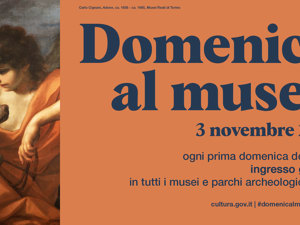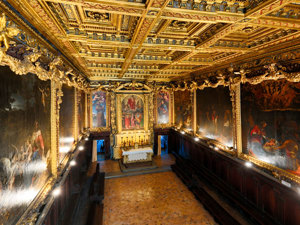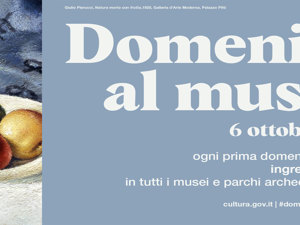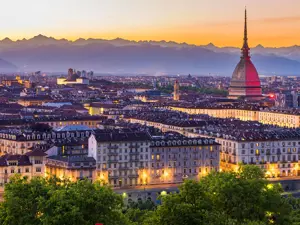City on a "human scale" with serene atmosphere
Treviso attracts visitors with its serene, gentle atmosphere. Capital of the ‘marca Trevigiana’ and one of the few remaining people-friendly cities in Italy, stretching between soothing oases of green, tranquil canals - known as ‘cagnani’ - and beautiful frescoed houses.

The historic centre, the spacious Piazza dei Signori, is like an open-air salon where the ‘trevigiani’ like to meet and chat. Framing the Piazza is the nineteenth-century Palazzo della Prefettura and the imposing Torre Civica (Civic Tower) with its distinctive Campaniòn (bell tower).

But even more impressive buildings surround the area, like Palazzo del Trecento, in a pure Romanesque style and the Lombard Renaissance Palazzo della Podesta. The piazza is book-ended by the Calemaggiore, a beautiful porticoed street.
The sequence of porticos that extends almost without interruption lends a touch of grace and makes the perfect place for meeting friends in every season and with every type of weather. Among these porticos is the Romanesque Loggia Dei Cavalieri, which is richly decorated with recently restored frescoes.

Photo: Sisiterscom.com, Shutterstock
Linked to Venice, which is no more than thirty kilometres away, Treviso still retains elements of the defensive buildings that were installed for the protection of the Serenissima (Republic of Venice): in fact, a large embankment surrounded by a thick wall almost four kilometres long, with circular towers and semi-hidden gun ports, still remains. Nowadays this ancient military structure is an ideal spot for walks and jogging in a picturesque, natural and watery landscape.

Photo: Sisiterscom.com, Shutterstock
The link with Venice is still evident in the name Buranelli, given to the water canal between the countryside and the city, which derives from the Venetian island of Burano. This is one of the most characteristic areas of the city, which features the Pescheria, home to the picturesque fish market, flanked by fruit and vegetable stalls and traditional taverns.

Church of Santa Maria Maggiore, Photo: Sisiterscom.com, Shutterstock
The churches of Treviso
The Duomo is a sight to behold; the writer Giovanni Comisso nicknamed it the “little Vatican”. In addition to the Cathedral, which was dedicated to St. Peter, there are also other buildings, such as the Baptistery, the Bishopric and the Rectory. The Cathedral houses a wonderful Annunciation by Titian.
A City of solid Catholic tradition, Treviso also has other important Churches: the Dominican church of San Niccolo, the construction of which began in the fourteenth century but was then halted during the Black Plague. Later restarted and frescoed by Tomaso da Modena, it represents the most distinguished Dominicans, from the founder Domenico di Guzmann to Tommaso d’Aquino.
The church of San Francesco is deeply spiritual and dedicated to the saint who recruited a group of friars to build an oratory dedicated to Our Lady.
The most important museum complex of the city is the Church of Santa Caterina with the adjacent Convent of the Servi di Maria, where you can admire one of the most wonderful frescoes of the fourteenth century, the work again of Tomaso da Modena. It depicts the Cycle of St. Ursula, the story of the Christian daughter of the King of Brittany who was martyred for refusing a Hun king, a story very dear to medieval culture.
Around Treviso
Around Treviso, just a few kilometres away, are several aristocratic homes, including Villa Emo in Fanzolo di Vedelago and Villa Barbaro in Maser, which eighteen-century Venetian Lords built as their residences to enjoy and look after the surrounding countryside. These wonderful residences are also splendid examples of architecture that even involved the genius of Andrea Palladio. In the nearby Possagno, birthplace of Antonio Canova, is the extraordinary gallery of plaster casts with all the most important works of the famous sculptor.
Asolo, a short distance away, is a striking place rich in history and known for having been host to the ‘divine’ Eleonora Duse, who wanted to be buried here, and where the queen of Cyprus Caterina Cornaro, after having abdicated in favour of the ‘Serenissima’, held court between the fifth and sixth centuries.

The radicchio. Photo: Sisiterscom.com, Shutterstock
The cusine of Treviso
The cuisine of the Treviso area is unique and tasty, and known above all for the use of radicchio rosso (red radicchio), a local speciality but celebrated throughout the world, and also for its special cheeses, including the creamy ‘casatella’. We should not forget the fantastic sweet Tiramisù, which seems to have originated here. All this can be washed down with an excellent Prosecco, which is produced in the area but widely exported.
Text by Anna Glik
Avion Tourism Magazine
Photos: Sisiterscom.com, Shutterstock
Photos: Sisiterscom.com, Shutterstock
Video: www.veneto.eu
Copyright © Sisterscom.com
Copyright © Sisterscom.com
Published June 2018
Tourism Board
www.visittreviso.it
www.veneto.eu
Where to sleep in Treviso

Treviso. Photo: Sisiterscom.com, Shutterstock
Treviso is a welcoming city and offers different possibilities for accommodation.
To find the ideal hotel and the best offers you can do a search for the stars but also for districts or landmarks.
where to go in treviso
Monuments

Photo: Sisiterscom.com, Shutterstock
THE CITY WALLS OF TREVISO
The walls of the city of Treviso were present since Roman times but today’s circle of walls date back to the 16th century when were reinforced and enlarged during the Venetian Republic. In addition to the embankment, the circular towers with half-hidden embrasures, there are three gates: San Tomaso, Santi Quaranta and Altinia, all with a great visual impact.

Photo: Sisiterscom.com, Shutterstock
TEMPLE OF ST. FRANCESCO
Via San Francesco
The Church is characterized by its simplicity, typical of the Franciscan order. The brick walls and diffused lighting give an atmosphere of spirituality. The works contained in this church include frescoes and the tomb of Francesca Petrarca, daughter of the famous Italian poet.
The Church is characterized by its simplicity, typical of the Franciscan order. The brick walls and diffused lighting give an atmosphere of spirituality. The works contained in this church include frescoes and the tomb of Francesca Petrarca, daughter of the famous Italian poet.

Photo: Sisiterscom.com, Shutterstock
THE CATHEDRAL OF TREVISO
Piazza Duomo
The complex of the Cathedral of Treviso includes the Church, the Baptistery, the Bishop’s Palace and the Canonical. The Cathedral, dedicated to St. Peter, was built between the 11th and 12th century and renovated in later years. Many works are preserved in the Cathedral, like the “Annunciazione” by Tiziano painting dating back to the 16th century.
The complex of the Cathedral of Treviso includes the Church, the Baptistery, the Bishop’s Palace and the Canonical. The Cathedral, dedicated to St. Peter, was built between the 11th and 12th century and renovated in later years. Many works are preserved in the Cathedral, like the “Annunciazione” by Tiziano painting dating back to the 16th century.

Photo: Sisiterscom.com, Shutterstock
CHURCH OF SAN NICOLÒ IN TREVISO
Via San Nicolò
The construction of the Church of St. Nicolò was begun by the Dominicans in the 14th century thanks to friar Niccolò Boccalino’s legacies, known as Pope Benedetto XI. With its simple forms elongated upward and massive perimeter walls, the Church of St. Nicholas is an example of the transition between the Romanesque and Gothic origin Alps.
The construction of the Church of St. Nicolò was begun by the Dominicans in the 14th century thanks to friar Niccolò Boccalino’s legacies, known as Pope Benedetto XI. With its simple forms elongated upward and massive perimeter walls, the Church of St. Nicholas is an example of the transition between the Romanesque and Gothic origin Alps.
Museums
DIOCESAN MUSEUM OF SACRED ART
The Museum is located inside the building "Old Canonical" in Romanesque style in the first home of the Cathedral of Treviso, built in 813 by Bishop Lupone. The museum is spread over three floors divided into thirteen rooms. The first floor is home to the Romanesque gallery with the gallery of the epigraphs and the hall of liturgical vestments from the cathedral.
www.diocesitv.it
www.diocesitv.it
THE CASON
Via Canizzano 10 - Pastoria del Borgo Furo
Cason is a structure, such as stilts, built on the banks of the River Sile. Inside the museum are preserved original instruments of fishing, which were used by the people who lived along the banks of the Sile. Here you can also find species of fish and amphibians, extinct due to the presence of non-native birds and fish.
www.pastoriaborgofuro.it
Cason is a structure, such as stilts, built on the banks of the River Sile. Inside the museum are preserved original instruments of fishing, which were used by the people who lived along the banks of the Sile. Here you can also find species of fish and amphibians, extinct due to the presence of non-native birds and fish.
www.pastoriaborgofuro.it
MUSEUM OF ST. CATHERINE
The Museum of the Municipality of Treviso are housed in the fourteenth-century St. Catherine's Church and the nearby Convent of the Servants of Mary. The museum houses the heritage of the city of Treviso, temporary exhibitions, events, educational, cultural and contemporary research. In the spaces of the convent are exposed important paintings from the Pinacoteca, dating from the fifteenth to the nineteenth century (Lorenzo Lotto, Tiziano, Giovanni Bellini, Jacopo da Bassano).
www.museicivicitreviso.it
Excursions

Photo: Sisiterscom.com, Shutterstock
LIVELET - ARCHAEOLOGICAL PARK EDUCATIONAL
Via Carpenè - Revine Lago (TV)
The Archaeological Park Livelet is surrounded by a natural landscape. The open air museum shows the reconstruction of three piles that relate to a period from the Neolithic to the Bronze Age. The tour is a journey to discover the daily life of prehistoric times through the reconstruction of several objects, tools and furniture.
www.parcolivelet.it
The Archaeological Park Livelet is surrounded by a natural landscape. The open air museum shows the reconstruction of three piles that relate to a period from the Neolithic to the Bronze Age. The tour is a journey to discover the daily life of prehistoric times through the reconstruction of several objects, tools and furniture.
www.parcolivelet.it

Photo: Sisiterscom.com, Shutterstock
VITTORIO VENETO
Vittorio Veneto is a city of the Marca Trevigiana and is the symbol of the historic moment at the end of Worl War I. Is known for its artistic excellence, historical and architectural heritage, and also for the birthplace of Lorenzo Da Ponte, famous Mozart's librettist. In Vittorio Veneto is possible to taste fine wine and also walking in ideal landscape, horseback riding or mountain biking.
www.turismovittorioveneto.gov.it
www.turismovittorioveneto.gov.it
News & Useful info
Shopping
You might be interested in
Destinations found in the vicinity
Other destinations
Airports nearby Treviso































